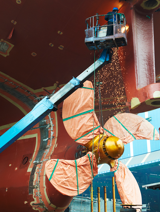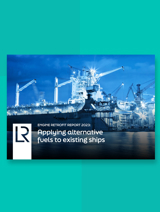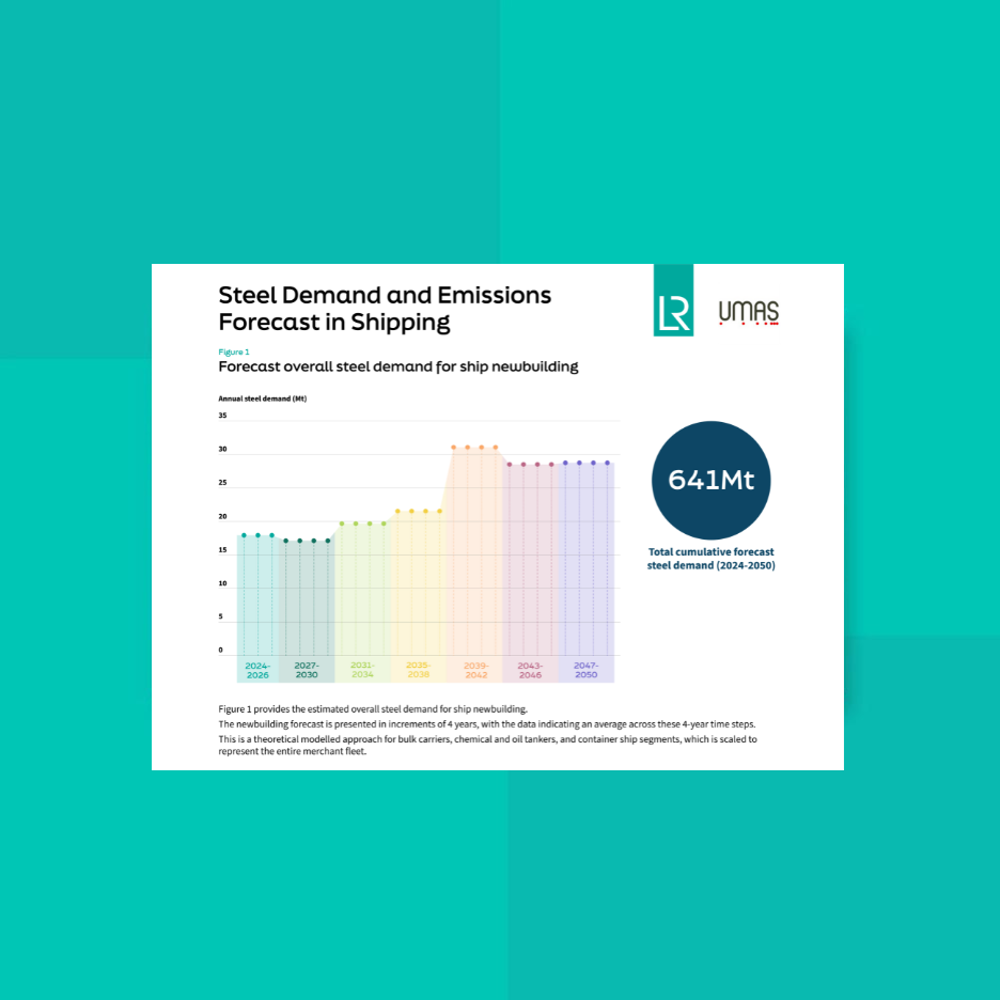This infographic features an analysis from Lloyd’s Register Maritime Decarbonisation Hub and UMAS on steel demand and emissions in shipping from 2024 to 2050.
The analysis found that international shipping could save 776MtCO₂ (million tonnes of carbon dioxide) cumulative emissions between 2024 and 2050 by progressively adopting hot rolled steel with lower embodied carbon, i.e. produced through lower emission processes and material inputs.
Hot rolled steel is highlighted in this analysis as the Science Based Targets initiative (SBTi) steel sector guidance currently covers steel in this condition, and hot rolled steel represents the majority (over 80 percent) of steel tonnage used for shipbuilding.
The analysis uses a forecast of the number and steel mass of newbuild ships likely to be built between 2024 to 2050, in line with expectations of growing demand, as well as achieving the International Maritime Organization's (IMO) greenhouse gas (GHG) reduction ambitions. This is then used to estimate the potential CO₂ emissions savings that could be achieved if the majority of the hot rolled steel used had lower embodied emissions, in line with the trajectory set by the SBTi steel sector guidance.






